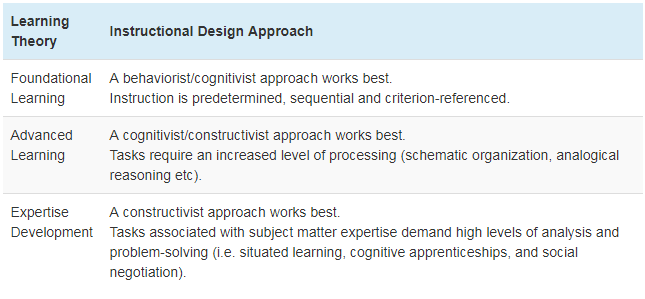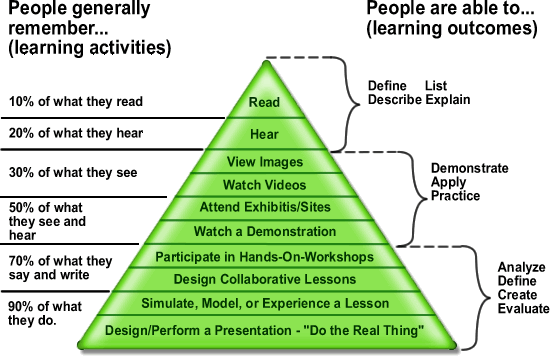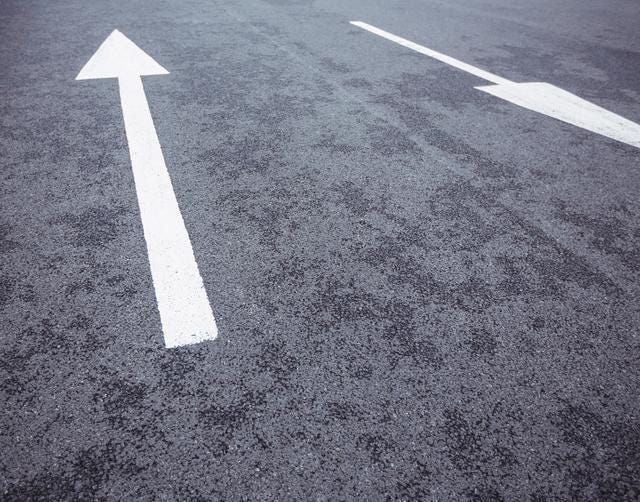Understanding Instructional Design
29 Mar

Table of Contents
ToggleA look at what is instructional design, how it came to be, and what are the learning theories behind it
For a layman, a simple characterization about instructional design would be:
it is a process for designing, developing and implementing learning material and courses.
But that would be an oversimplification of the process of instructional design and the work that goes into designing and developing learning experiences.
If learning was indeed that simple then we all could possibly be self-learners, or autodidacts, from reading Wikipedia articles.
The science and art that goes into building conducive learning environments and experiences so that information is not only distributed appropriately but also, retained in memory has more method to it.
This article explores the underlying theories of instructional design, how these were formed, and touches in part upon ‘what is the role of an instructional designer’.
This article is part of zipBoard’s series on instructional design, the previous article of which you can see here:
The Basics of Instructional Design Processes
The elements of instructional design
Certain concepts and steps that are essential to instructional design are:
- Understanding the present situation of the learner
- Understanding the needs of the learner
- Defining a goal for learning exercise, i.e. set of learning objectives
- Designing and developing learning activities that will help learners achieve the objectives
Almost all learning theories today incorporate these elements into their process for developing instructional design, whether that is the ADDIE model, Successive Approximation Model (SAM), ASSURE model, or rapid prototyping.
Underlying theories for instructional design
Since instructional design ultimately aims to modify learner behavior in some way, there are certain theories that guide how this can be achieved.
Behaviorism
This theory operates on the principle that external stimuli trigger certain behavior and that becomes automatic if repeated sufficient times. It is one of the most important principles kept in mind when designing instruction.
This is the reason that many vocational courses will have repetitive actions as part of their curriculum so that behavioral patterns can be refined with each repetition.
B.F. Skinner’s book, Science and Human Behavior advocated the application of this theory via the use of positive and negative reinforcement to modify behavior for educational and training purposes. One application of behaviorism is classical conditioning, made popular by the work of Ivan Pavlov.
Pavlov worked with dogs, experimenting with light and food — the aim being that after sufficient repetitions, dogs would salivate simply by seeing the light. Essentially, the dogs were trained to see the light as stimuli rather than food. However, there was also the downside that as repetitions increased and food remained absent, salivation also started decreasing.
Cognitivism
Cognitivism focuses on the inner workings of the brain to modify behavior. By examining cognitive aspects like memory, thinking, how we learn and imbibe knowledge, and how we approach problem-solving, instruction can be created that changes behavior appropriately.
This model is more individualistic in nature and does not generalize like behaviorism. It looks at knowledge as a schema, that is organized within the brain.
This organization owes to relationships inside the brain, based on various cognitive aspects. For example, our brain is able to pick up on relationships and hierarchies in typography based on proximity and spatial arrangements of elements, which is Gestalt’s theory.


This is because the knowledge to perceive shapes and spaces in a certain way has been stored in our brain as a schema.
Our brain’s information processing is based on a number of cognitive functions such as sensory memory, working memory, and long-term memory. Schemas come under long-term memory. Continuously repeating a task commits the knowledge to our working memory. It is important to remember that information is constantly being processed in our brain across all these memory functions.
Constructivism
The belief in constructionist theory is that knowledge is constructed or built upon past experiences and ideas. This takes into account the personal motivations and learning that an individual has had, acknowledging their uniqueness.
This means that every person has a different process for constructing schemas in their brain and a different interpretation about it.
The role of an instructor in such a case is more of a facilitator, rather than a direct supplier of knowledge. This places the learner at the center of the learning model. The idea that knowledge is not directly absorbed differs from the objective notion of simply transferring learning.
In such an environment, how the trainer facilitates knowledge becomes very important, as does the nature of knowledge being imparted. There need to be open-ended questions and the opportunity for learners to reflect on concepts imbibed. Typically, smaller group activities are favored in such an approach.
What learning theory should your instructional design approach adopt?
So which of these learning theories should influence your approach to instructional design.
The answer is, it depends.
Dale H. Schunk, in his book Learning Theories, talked about some of the questions that instructional designers and decision-makers need to look at when making such a decision:
- How does learning occur?
- What are the factors that influence learning?
- What role does memory play in the learning activities?
- How is knowledge transferred during learning activities?
- What types of learning are best explained by the theory?
Michael Hanley discusses this very subject in his article on aligning learning theory with instructional design, where he has a reference table for what theory can work in which scenario:

Developing a system for instructional design
If we look at the seeds for instructional design, a structure starts to emerge in the research for the military application of instruction during the Second World War. In an effort to develop training material for a large number of troops, considerable research and study into the principles of instruction and learning were carried out.
The research focus in these studies was on leveraging human behavior by influencing their experiences via technology and learning material.
This still holds true as the main aim for online learning or e-learning today.
The cone of experience
Edgar Dale’s cone of experience, which looks at the concreteness of instructional methods was one of the early results of a study into this area.

The levels of the cone are based on how many senses are involved in learning. So as the number of senses involved goes up, the retention of learning and knowledge also increases.
This framework also gives a glimpse into the influence that learning activities have on learning outcomes.
Bloom’s Taxonomy

Benjamin Bloom and his team comprising of Max Englehart, Edward Furst, Walter Hill, and David Krathwohl published a framework for categorizing learning goals, which came to be known as Bloom’s Taxonomy.
This laid down a framework that emphasized not just remembering learning but inculcating the abilities to analyze and evaluate concepts picked up in learning. Bloom and his team identified three domains that influenced learning:
- Cognitive — how learners think
- Psychomotor — what learners do
- Affective — what learners feel
Over time this framework has been revised by the original authors and other researchers so that the following activities have been identified as comprising each domain:
Cognitive
- Remembering
- Comprehending
- Applying
- Analyzing
- Synthesizing
- Evaluating
Psychomotor
- Perception
- Set
- Guided response
- Mechanism
- Complex overt response
- Adaptation
- Origination
Affective
- Receiving
- Responding
- Valuing
- Organizing
- Characterizing
Significance of Bloom’s Taxonomy
Bloom’s Taxonomy continues to be a mainstay in the study and design of instruction even after all this time, mainly because it establishes some important relationships and concepts in the development of learning materials.
- Goals for instruction need to be established early on so that both instructors and learners are aware of the purpose of learning and training.
- A concrete framework for developing and designing instruction helps the process.
- Having a framework helps instructional designers plan and choose the right method for delivering instruction.
- It helps create a sound system for evaluating and assessing the outcome of learning activities and learner performance.
- Provides a platform to gauge whether learning activities have brought learners closer to the objectives set out to achieve.
Instructional Design Strategy – Free ebook for download
Gagne’s Nine Steps of Instruction
Robert Gagne’s work in developing instructional design laid the basis for many instructional design processes and models that are used today. Gagne’s principles of instructional design or nine steps of instruction are considered to be a checklist of things to cover when designing and developing learning material.
The nine steps of instruction are:
Gain attention
- Using a stimulus to gain the attention of learners so that they are engaged and committed to learning. An introduction that engages the learners right from the start is one way to achieve this.

- Explaining to the learners how relevant the online training or course is another good way to gain their attention. Things that will matter to them include how efficiency is improved or time saved, especially in the case of corporate e-learning solutions. For e-learning training for students in the K-12 context, using a custom learning design to frame thought-provoking issues can help.
Establish a learning objective
- Establishing a learning objective gives the learners a concrete goal to work towards. It will give them an idea of what they are trying to accomplish and organize their ideas around it, also providing motivation.
- Research has indicated that achievement can be raised by 34 percentile points if an objective is in place, and even more when learners have a sense of control over their learning outcomes.
Stimulate recall of prior learning
- Linking new knowledge that the students are about to acquire with previous things they have learner helps. This is also the basis of the constructivism theory mentioned earlier. Knowledge is easier to absorb when it is built on previously known concepts and past experiences.
- Visual mapping of new concepts to prior learning helps build a mental schema in the learner’s mind. Note-taking has shown to be one of the more successful practices in this regard, and hence, is widely encouraged.
Present the material
- When learning material is presented to learners, it has to be done in a way so that impact and retention are maximized. Bloom’s taxonomy and Dale’s cone of experience provide good reference models in this regard.
- Breaking down the material into smaller pieces and in an order that aligns with learning objectives is important. Using media and examples is also a good strategy.
Provide learning guidance
- Giving learners an indication of the desired outcomes help them calibrate their approach appropriately. This can be done via examples, case studies, and modeling various learning strategies like concept mapping, visualizing, role-playing.

- Modeling the right examples and non-examples helps learners acquire knowledge more effectively. It also gives them encouragement and facilitates thinking along the same lines.
Elicit performance
- At this stage, learners get a chance to practice and demonstrate the knowledge they have acquired. Once they internalized the knowledge, it is important for them to be able to elicit it at the right time and in the right way. This also increases their confidence and validates the effort they have put into learning activities.
- In order to help the learner to elicit performance, learning material should consist of recall strategies, deep-learning questions, help them attach context to content, and delve into details of the content.
Provide feedback
- Feedback needs to be specific in nature, as well as confirmatory and corrective. This way the learners know what they did right and wrong.
- Feedback is a constant loop and not something that should come right at the end of the e-learning course or training module. So, it is important for courses to have feedback inserted at the right places during instruction.
Assess performance
- One of the main functions of instruction is to provide assessment tools so that learners and instructors can gauge how successful learning activities have been in helping learners reach the objectives that had been set at the beginning.
- Assessment modules not only need to test for prerequisites and endpoint knowledge but have to be inserted at appropriate gaps. There will be some variance in form and timing depending on the needs of the course.
Enhance retention and transfer to the job
- At the last stage of instruction, learners need to be able to summarize and internalize all the knowledge they have acquired. Tools to do this are helpful such as providing reference material that can help them go into detail or summary visual maps that put everything into context.
Conclusion
This has been an overview of what instructional design aims for and how it can be approached. Even with evolving needs for both learners and the decision-makers who commission learning material, an understanding of the underlying principles is important to design sound instructional content.
Newer instructional strategies such as blended learning and microlearning provide different and interesting challenges for instructional designers as compared to the conventional techniques that were used for PowerPoint presentations or slide-based courses. What is your approach to and thoughts about instructional design? Let us know in the comments.
If you like this article, check out this piece on the role of an instructional designer:
The Basics of Instructional Design Processes
If you want to know more about learning theories and strategies, another helpful resource can be instructionaldesign.org.
This article is part one of our series on instructional design. Check out part two of this series here, where we discuss instructional design processes and models.
If you liked this article then we highly suggest that you download this free ebook for | Complete Guide on Instructional Design
Improve instructional design QA faster
Request a personalize demo to understand how you could make your instructional design QA more efficient with our help!
Get DemoRecent Posts
- Best Practices for Efficient Document Reviews and Collaboration December 18, 2025
- MEP Document Management: How to Streamline Reviews & Avoid Rework October 3, 2025
- What Is Online Proofing Software? And Why Content Review Breaks Without It July 11, 2025
- How Laerdal Medical Cut eLearning Review Time by 50% with zipBoard’s Visual Review Tool July 9, 2025
- Why Your Team Needs a Content Feedback System (Not Just Comments in Docs) May 28, 2025
©️ Copyright 2025 zipBoard Tech. All rights reserved.


